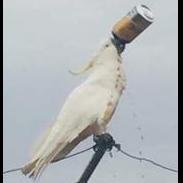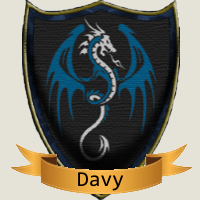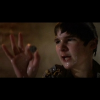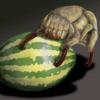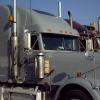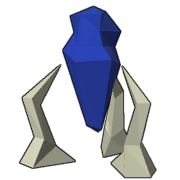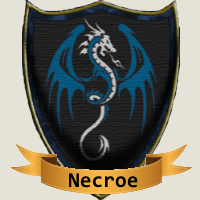Leaderboard
Popular Content
Showing content with the highest reputation on 18/02/15 in all areas
-
8 points1837 John Deere fashions a polished-steel plow in his Grand Detour, Illinois, blacksmith shop that lets pioneer farmers cut clean furrows through sticky Midwest prairie soil. 1838 John Deere, blacksmith, evolves into John Deere, manufacturer. Later he remembers building 10 plows in 1839, 75 in 1841, and 100 in 1842. 1842 John Deere adds retailing to his business, filling orders for the Patent Cary Plow. 1843 Deere and Leonard Andrus become "co-partners in the art and trade of blacksmithing, plow-making, and all things thereto..." 1848 The growing plow business moves to Moline, Illinois, 75 miles southwest of Grand Detour. Moline offers water power and transportation advantages. Deere chooses a new partner, Robert N. Tate, who moves to Moline and raises the rafters on their three-story blacksmith shop by July 28. 1849 A workforce of about 16 builds 2,136 plows. 1852 Deere buys out his partners. For the next 16 years, the company is known variously as John Deere, John Deere & Company, Deere & Company, and Moline Plow Manufactory. 1853 Sixteen-year old Charles, Deere's only living son, joins the firm as a bookkeeper following graduation from a Chicago commercial college. 1858 The business totters during a nationwide financial panic. Maneuverings to avoid bankruptcy shuffle ownership and managerial arrangements. John Deere remains president, but power passes to 21-year-old Charles Deere. He will run the company for the next 49 years. 1863 The company makes the Hawkeye Riding Cultivator, the first Deere implement adapted for riding. 1864 John Deere obtains the company's first actual patent for moulds used in casting steel plows. Another follows in a few months and a third the next year. 1867 Charles Deere sues Candee, Swan & Co., a competitor, for trademark infringement. The case has precedent-setting implications for trademark law. Could Deere preempt the word "Moline," which it has been using in its advertising, so that no similar product could incorporate it? The ultimate answer is no. The Walking Cultivator is patented in August 1867. Although farmers might prefer riding, the lower cost of this unit makes it sell even though the man has to walk in soft ground while straddling a row of corn. 1868 After 31 years as a partnership or single proprietorship, the concern is incorporated under the name Deere & Company. There are four shareholders at first, six within a year. Charles and John Deere control 65 percent of the stock. 1869 Charles Deere and Alvah Mansur establish the first branch house, Deere, Mansur & Co., in Kansas City. A semi-independent distributor of Deere products within a certain geographic area, it is the forerunner of the company's current farm and industrial-equipment sales branches and sales regions. 1873 John Deere is elected mayor of Moline and serves two years. 1874 Despite economic problems among farmers, the Deere business grows. More than 50,000 plows are sold. 1875 Gilpin Moore develops the Gilpin Sulky Plow. It takes the farmer off his feet, puts him on a seat, and becomes one of the company's most successful 19th-century products. 1876 Noting sagging business prospects and skyrocketing bad debts, the company institutes a 10% wage cut. A brief strike ends and employees return to work on the company's terms. The "leaping deer" trademark is registered. 1877 Deere & Mansur Company is formed in Moline to manufacture corn planters. A separate organization from the similarly named Kansas City branch, it will become part of Deere & Company in 1910. 1878 The Gilpin Sulky Plow defeats 50 other plows in a field trial at the Paris Universal Exposition, winning the first place Sevres vase valued at 1,000 francs. Unit sales the following year rise to 5,198, and reach 7,824 in 1883. 1880 Wagons enter the product line early in the decade, soon followed by buggies. 1882 Deere & Mansur Company corn planters, employing an innovative rotary planting mechanism, turn a $48,000 profit. 1883 The five best-selling products between 1879 and 1883 are walking plows, Gilpin sulkies, cultivators, shovel plows, and harrows. Walking plows account for more unit sales (224,062) than the other four combined. 1886 John Deere dies in Moline at age 82. 1888 Steam tractors appear on American farms during the 1880s. Deere makes gang plows that tractors can pull, but not the tractors. 1889 The company's five key branches are in place at Kansas City, St. Louis, Minneapolis, Council Bluffs/Omaha, and San Francisco. 1890 Deere's board recommends selling the company. A British syndicate and other suitors appear, but deals fall through, and the company remains independent. 1892 Charles Deere's daughter Katherine marries William Butterworth, who will succeed Charles as the company's CEO. Charles' daughter Anna marries William D. Wiman. Their son, Charles Deere Wiman, will succeed Butterworth in 1928. 1894 A bicycle craze grips the country. Branch catalogs push the Deere Leader, the Deere Roadster, and the Moline Special. The fad fizzles in a few years. (In the 1970s, the company returns briefly to the bicycle business.) 1895 The Furrow debuts. It grows into one of the world's preeminent farmer's magazines. 1900 In the 1899-1900 fiscal year, aggregate business exceeds $2 million for the first time. 1903 George Mixter, plow-factory superintendent, persuades the company to install extensive environmental controls in the grinding room. 1904 The St. Louis branch territory is split. The Dallas office becomes a full-fledged branch. 1907 Charles Deere dies. William Butterworth, his son-in-law, becomes CEO. The company establishes a non-contributory pension plan for employees with 20 or more years of service who have passed age 65. 1909 With affordable housing for some workers a problem, the company joins with the Deere estate to build 50 homes. By 1920, 315 homes and apartments have been built for employees in Moline and East Moline. Some are sold, and some rented. After WWII, the company builds 111 more houses in Dubuque. 1910 Directors launch a major reorganization. Its goal is a consolidated company controlled by the Deere & Company board. The plan unifies factories and branches, anticipates acquisitions, and centralizes accounting and financial planning. 1911 For the first time, the company issues preferred stock. The shares are listed on the New York Stock Exchange the following year. 1912 The modern Deere & Company emerges. It consists of 11 manufacturing entities in the U.S. and one in Canada, and 25 sales organizations—20 in the U.S., including an export department, and five in Canada. The company also operates a sawmill and owns 41,731 acres of timberland in Arkansas and Louisiana. Harvester Works built in East Moline. 1918 After years of investigating tractor production, Deere buys the maker of Waterloo Boy tractors. The tractor will soon become the company's basic product. Though 5,634 Waterloo Boys are sold this year, Ford Motor Company sells more than 34,000 Fordson tractors. 1919 Labor turmoil spreads throughout the country. A bitter three-month strike over union recognition breaks out in Waterloo, the most serious employee relations strife Deere has so far experienced. The strike ends with Deere remaining non-union. 1921 Bad times continue. As business shrinks, extensive layoffs follow. Waterloo Boy tractor sales plummet to 79 from 5,045 the previous year. Wages are cut at least 10%. 1923 Deere launches the Model "D." A success from the start and the first two-cylinder Waterloo-built tractor to bear the John Deere name, it would stay in the product line for 30 years. 1925 Design begins on the "GP" (for General Purpose) Tractor, the Deere answer to the Farmall. 1927 The company produces a combine, the John Deere No. 2. A year later, catalogs advertise the John Deere No. 1, a smaller, more popular machine. By 1929, the No. 1 and No. 2 are replaced by newer, lighter-weight versions. 1928 William Butterworth is elected president of the U.S. Chamber of Commerce. Primary company managerial authority passes to Charles Deere Wiman. 1929 The "GP" Wide-Tread, a row-crop tractor, enters the market. It is the first Deere tractor with a tricycle front to fit between two crop rows, and rear axle wide enough so wheels can straddle two rows. 1930 Consolidations leave only seven full-line farm equipment companies: John Deere, IH, Case, Oliver, Allis-Chalmers, Minneapolis-Moline, and Massey-Harris. Deere and IH dominate most product categories. 1931 A $1.2 million embezzlement at People's Savings Bank in Moline, Illinois — "Deere's bank" — threatens closure and loss of employee savings. The company writes a check to cover the loss. The bank survives. 1932 The Great Depression hardens, forcing massive layoffs, pay and pension cuts, shortened hours, and a temporary end to paid vacations. A 1920s savings innovation, the Thrift Plan, eases the burden for some employees. John Deere continues group insurance for the unemployed, lowers rent in company housing, and starts "make work" projects. 1933 Business is almost at a standstill. Sales plunge to $8.7 million. Though it is losing money, the company decides to carry debtor farmers as long as necessary, greatly strengthening farmer loyalty. 1934 Despite the Depression, the company emphasizes product development. The Model "A" Tractor enters production. A similar but smaller Model "B" follows in 1935. They become the most popular tractors in the company's history, remaining in the product line until 1952. 1937 The company celebrates the 100th anniversary of John Deere's steel plow with special events and a variety of memorabilia. 1938 Industrial designer Henry Dreyfuss, working with Deere engineers, streamlines the "A" and "B" Tractors. Concern for attractive design joins traditional utilitarian values as hallmarks of John Deere products. 1939 Model "L" Series Tractors, built from 1936 to 1946 at Wagon Works in Moline, enjoy an enormous boost in sales after Henry Dreyfuss' styling. 1941 The U.S. enters WWII. "Limitation orders" restrict civilian production of farm equipment, repair parts and exports. (By 1944, with the tide of war turning in the Allies' favor, limitations on civilian production end.) 1942 Charles Deere Wiman accepts a commission as an Army colonel. Burton Peek succeeds him as company president. Before returning to Deere in 1944, Wiman briefly directs the farm machinery and equipment division of the War Production Board. 1943 Deere makes military tractors, ammunition, aircraft parts, and cargo and mobile laundry units during the war. About 4,500 employees serve in the military, some in the "John Deere" Battalion, a specialized ordnance group that sees service in Europe. 1945 John Deere factory workers endorse unions. Collective bargaining over wages and working conditions replaces a 105-year-old pattern of dealing with workers individually. 1947 The new John Deere Dubuque Works builds the Model "M" Tractor. Two years later, equipped with a tracked undercarriage, the "M" becomes available as a crawler, called the "MC." This will herald the Worldwide Construction Equipment Division. When a front blade is added, it becomes the "M" bulldozer. 1948 The Deere Des Moines Works, a former ammunition plant acquired from the government, turns out cotton pickers and cultivators. Eventually it will also build plows. 1949 Deere's first diesel-powered unit, the Model "R" Tractor, enters production. 1950 Agreement with the United Auto Workers on a five-year contract ends a long period of postwar labor unrest. 1953 The Model 70 is launched as the largest row-crop tractor to date. Initially available with gasoline, all-fuel, or LP-gas engine, it will become the first diesel row-crop tractor. 1954 Engineers develop a highly successful 2-row corn head. Attached to a new Model 45 Combine, it enables a farmer to pick, shell, and clean up to 20 acres of corn a day in a single operation. 1955 William A. Hewitt is elected president and later CEO following the death of Charles Deere Wiman, his father-in-law. Hewitt is the last representative of the Deere family to direct the company, which he does for the next 27 years. 1956 The company expands its presence around the world when it builds a small-tractor assembly plant in Mexico and buys a majority interest in a German tractor and harvester makers with a small presence in Spain. Soon, it also moves into France, Argentina, and South Africa. 1957 Six-row planters and cultivators, John Deere innovations, reach the market. They provide 50 percent more planting and cultivating capacity for row-crop farmers in corn- and cotton-producing areas. 1958 The John Deere Credit Company, financier of domestic purchases of John Deere equipment, begins operations. A new tractor and implement manufacturing plant is built in Rosario, Argentina. 1959 The company brings out the 8010, a diesel-powered, 215-horsepower, 10-ton Goliath – the largest tractor it has ever built. Only a few are sold. Soviet Premier Khrushchev visits the Des Moines Works. 1960 Four "New Generation of Power" tractor models steal the show at Deere Day in Dallas. Some 6,000 attend the sales meeting, including all U.S. and Canadian dealers. 1961 In Saran, near Orleans, France, construction starts on a new engine factory. In Moline, construction begins on the Deere & Company Administrative Center, later renamed Deere & Company World Headquarters. 1962 John Deere marks its 125th anniversary. Construction begins on a product-engineering center in Dubuque, Iowa. Company buys a majority interest in South African Cultivators, a farm implement firm near Johannesburg. 1963 John Deere surpasses IH to become the world's largest producer and seller of farm and industrial tractors and equipment. The company ventures into the consumer market, deciding to produce and sell lawn and garden tractors plus some attachments such as mowers and snow blowers. 1964 The Deere & Company Administrative Center opens. Designed by Eero Saarinen, whose work includes the Gateway Arch in St. Louis, the Deere building will win many architectural awards. 1966 A banner year. Total sales surpass $1 billion for the first time. Earnings reach a high of $78.7 million. Farm equipment sales set a record for the fourth straight year. Industrial equipment sales notch their largest ever year-to-year increase. Lawn and garden equipment sales rise 76 percent. Worldwide employment hits a record. John Deere introduces the first commercially available rollover protective structures for farm tractors, and later releases the patent to the industry without charge. 1967 The company's first industrial equipment sales branch opens in Baltimore. 1969 Overall sales level out due primarily to a downturn in farm equipment sales. Overseas operations expand but do not produce profits. The John Deere Insurance Group is created. 1970 Deere reorganizes its management structure to reflect growing diversification. Three operating divisions emerge: Farm Equipment and Consumer Products, U.S. and Canada; Farm Equipment and Consumer Products, Overseas; and Industrial Equipment, which has worldwide responsibilities. 1971 "Nothing Runs Like a Deere" advertises snowmobiles, a new product of the John Deere Horicon Works. The slogan lasts far longer than the snowmobile line, which is sold in 1984. 1972 Four new "Generation II" tractor models with operator enclosures—Sound-Gard bodies—reach the market. Farm equipment sales exceed $1 billion. 1973 John Deere total sales top $2 billion for the first time. Board decides to move toward more independence by appointing the first outside director. 1975 The John Deere Davenport Works, located in Davenport, Iowa, opens and begins manufacturing industrial-equipment components. 1976 Equipment gets bigger, increasing farm productivity. Tractors average 40 percent more horsepower and 44 percent more weight than in 1970. Sales of both farm and industrial equipment triple and consumer-products sales soar fivefold since 1966. 1977 Agreement with Japanese manufacturer Yanmar authorizes sale of small tractors under the John Deere name. An updated Product Engineering Center is established in Waterloo. A stock-purchase plan for salaried employees begins. 1978 The award-winning West Office Building addition to the Administrative Center, designed by Kevin Roche, Eero Saarinen's successor, opens. Also new: Canadian headquarters in Grimsby, Ontario; John Deere Engine Works in Waterloo; and Atlanta sales branch offices. 1979 Employment reaches an all-time high of 65,392. Sales top $5 billion, earnings $310 million, both records. 1980 A 4-row cotton picker, an industry first, is introduced. Field tests indicate it will increase an operator's productivity by 85 to 95 percent. 1981 The John Deere Tractor Works in Waterloo becomes fully operational. 1982 Robert A. Hanson succeeds retiring Chairman William A. Hewitt. 1984 Deere acquires Farm Plan Corporation, an agribusiness financier. 1985 John Deere Health Care, Inc. is formed. Its subsidiary, Heritage National Healthplan, grows by century's end into a health-care provider for more than 700 employers and over 400,000 members in five states. 1986 A 163-day labor strike in the United States severely impacts production. Employment at year's end totals 37,481, down 43 percent from the 1979 high of 65,392. For the remainder of the century, employment will remain below 40,000. 1987 Deere celebrates its 150th anniversary. Continued low farm income and lower Deere sales lead to a net loss of $99 million. 1988 The economy rebounds after six years of recession during which weaker farmers, dealers, and equipment companies go out of business. Deere & Company sales soar 30 percent from 1987. Profit, following two years of losses, exceeds $315 million, a record. A joint venture is formed with Japanese company Hitachi to assemble excavators in the United States. 1989 The dividend, cut in 1982, is restored to its previous level. Funk Manufacturing Company, maker of powertrain components, is acquired. 1990 Hans W. Becherer, president since 1987 and CEO since 1989, is elected chairman upon the retirement of Robert Hanson. 1991 Lawn-and-grounds-care equipment operations in the U.S. and Canada become a separate division. Since 1970 they had been part of the farm-equipment operations. The company acquires SABO, a European maker of lawn mowers. 1992 John Deere launches a program to encourage installation of rollover protective structures and seat belts on older tractors. 1993 New 5000, 6000, and 7000 Series Tractors drive up market shares in North America and Europe. Among 20 contenders in Germany, Deere moves from third to first place in tractor sales. Sales of lawn and garden equipment top $1 billion for the first time. 1994 Deere acquires Homelite, a leading producer of handheld outdoor power equipment. It arranges with Zetor, a Czech company, to provide a simple, small tractor for developing markets. Deere Family Healthplan centers—primary-health-care providers—open in Waterloo and Des Moines, joining one opened in Moline in 1993. 1995 Deere's strong performance "shows that Deere & Company has become a new company in every important sense," according to the Annual Report. Among reasons cited: product technology leadership, strong emphasis on quality, and improved cost structure and asset management. 1996 Four mid-priced lawn tractors and two walk-behind mowers branded "Sabre by John Deere" introduce company products to a broad new market. They're designed to be sold through national retailers and home centers as well as John Deere dealers. 1997 Overseas sales top $3 billion, more than the company's entire sales total prior to the mid-1970s. The company obtains an equity position in a Chinese combine company. The John Deere Pavilion, with equipment exhibits and interactive displays, opens in downtown Moline. 1998 Despite late-year weakness in the farm sector, agricultural-equipment sales hit a record. Company net earnings reach $1 billion for the first time. Cameco Industries, producer of sugarcane-harvesting equipment, is acquired. Work begins on a new tractor-manufacturing facility in Pune, India. 1999 While challenging by financial standards, 1999 is a breakthrough year for John Deere. Not only does the company record a meaningful profit in the face of a major downturn in the farm economy, but the actions of recent years to create a more-resilient world-class enterprise successfully faced their first severe test. Special Technologies Group is formed. 2000 Hans Becherer reaches retirement, and Robert W. Lane is elected CEO. Deere acquires Timberjack, a world-leading producer of forestry equipment. A new tractor plant is opened near Pune, India. Credit offices are established in Argentina and Brazil. Deere is granted banking license in Luxembourg, allowing John Deere Credit ability to finance equipment throughout Europe. 2001 A record number of products are introduced to strengthen Deere's global competitive position. John Deere Landscapes is formed through acquisitions of McGinnis Farms and Century Rain Aid. 2002 Business Ethics magazine names John Deere one of its 100 Best Corporate Citizens for 2002. Crain's Chicago Business announces that John Deere is the most trusted Illinois company, based on a nationwide survey. 2003 Through agreement with The Home Depot, riding mowers are sold in the mass channel for the first time in company history. John Deere-branded Deere's small/diverse supplier programs received a first-ever rating of "highly successful" from the U.S. Department of Defense. Driven by gains in Deere's Commercial & Consumer Equipment and Construction & Forestry Divisions, the company's earnings double for 2003; equipment sales grow 14 percent. 2004 Record full-year earnings of $1.4 billion are more than twice the level of 2003 earnings. Deere & Company announces plans to build a new tractor factory in Montenegro, Rio Grande do Sul, Brazil. The facility is expected to be in full production by the second half of 2006. 2005 Deere & Company opens a seeding-equipment assembly operation in Orenburg, Russia, and establishes a dealer network. The company additionally announces plans to build a new engineering and information-technology support center near the John Deere joint venture tractor manufacturing facility in Pune, India. John Deere invests in wind energy projects in the rural United States and establishes a new wind energy business unit managed by John Deere Credit. 2006 Growing global market presence helps drive earnings to record $1.7 billion; Chairman & CEO Robert W. Lane named "CEO of the Year" by Industry Week magazine. John Deere Landscapes becomes the number-one wholesale distributor of irrigation, nursery, lighting, and landscape materials in the United States. John Deere Tianjin Works, a new transmission factory in Tianjin, China, opens. 2007 Deere & Company stockholders approve a two-for-one stock split, increasing the number of common shares to 455 million. A new tractor manufacturing facility is acquired in Ningbo, China. Deere & Company completes its acquisition of LESCO, Inc., a leading supplier of lawn care, landscape, golf course, and pest control products. John Deere is chosen by Ethisphere magazine for its list of the World's 100 Most Ethical Companies. 2008 Deere & Company enters into joint ventures with construction equipment manufacturers in China and India. Deere announces plans to build a distribution, replacement parts, and training center in Russia, a European Technology & Innovation Center in Germany, and a marketing office in Kiev, Ukraine. John Deere Water business expands with the company's acquisition of irrigation products manufacturers T-Systems International and Plastro Irrigation Systems. 2009 Samuel R. Allen is named John Deere's ninth chief executive officer. A new global operating model combines the technology, expertise, experience, channels, and investments of the Worldwide Agricultural Equipment Division and Worldwide Commercial & Consumer Equipment Division into a single unit called the Agriculture and Turf Division. A joint venture in India is formed with Ashok Leyland Limited to manufacture backhoes and four-wheel-drive loaders. 2010 Research and development expense tops $1 billion for the first time. The company also opens a technology and innovation center in Germany and expands a research and development center in China. In India, a joint-venture is opened to produce backhoes and wheel-loaders for Asian markets. Deere is the first company to ship construction machines with above 175-horsepower engines certified to meet rigorous U.S. Interim Tier 4 emissions standards. 2011 Deere is listed among the 50 most-admired companies by Fortune magazine and ranked as one of the 100 best global brands by a leading brand-consulting firm. As a sign of the company's emphasis on global growth, sales outside the U.S. and Canada jump by 38%. The company begins work on plants to produce engines, loaders, and ag equipment in China and tractor and combine factories in India. In addition, two factories are planned for Brazil — one for backhoes and wheel loaders, and a joint venture for excavators. John Deere Domodedovo, Russia, begins building forestry skidders and forwarders, and other facilities are expanded in India, Brazil, Argentina, Russia, and the U.S. 2012 The company celebrates its 175th anniversary. Net sales and revenues ($36.2 billion) and net income ($3.1 billion) are new records. "Timeline." John Deere. N.p., n.d. Web. 18 Feb. 2015.
-
7 points
-
6 pointsOnce again proving the people thinking smite needs a buff have no idea what they are talking about, just like they didn't know how frantic charge worked, and just like they didn't know how the dispelling of fire pillar worked. It works as it did before, its percentage based like Madt said. 87ql drake It did 72.52 damage from 100 HP every time to him. hmmmmmmmmmmmmmmmmmmmmmmm, almost like someone doesn't know what they are talking about... [02:21:12] <Jukimo> like if you are going to talk about a topic [02:21:15] <Jukimo> atleast know your ###### [02:21:23] <Jukimo> before you start spouting out random ######
-
5 pointsTired of slaving over your farm for low yields of Corn and good hearty American wheat? Well slave no longer! Today I present to you a few models of my tractors that I believe will improve you leisurely online farming simulator! This classic has been our favorite to tow your favorite plow. Ditch the oxen...hop on a deere! Bulk Storage Bins? You mean COMBINE! Gather up your crop easily with this true American Combine. Fun for you...good for America. And Lastly... Keep your gardens in check with our latest mowing model. The perfect gift for the perfect patriot..YOU! Please Rolf..Think about it.
-
5 points
-
5 pointsQuote from the floor somewhere in second life "The only things in here that are real, are our feelings, so play nice!" And for me that's what it comes down to. Yeah, those animals you broke in and stole weren't real. Bits and pixels. But their owner might have loved them, and THAT is. That's what makes it wrong, and that's why I could never do it, not even on a PVP server. What REALLY does my head in is when I'm coding AI with feelings. I mean those feelings are nothing more than electrical impulses somewhere... but so are yours!
-
4 points
-
4 points
-
4 points
-
4 pointsWe should like.. call Rolf up because this spell didn't work.. yeah. The cave itself is an exploit anyway.
-
3 pointsIf there is a bell tower on deed it rings along with all the gates being locked down. If you find it annoying, why did you let one be made?
-
3 pointsMy favourite tractor brand. The second one is Lamborghini but just for the name LOL
-
3 points
-
3 pointsYou do realize that for certain timezones, it's rarely easy to be there for the scheduled "community" ros which always favor east-coast and european timezone? I guess there is no compassion for the people outside the "community" timezone because they aren't apparently part of the "community". It's pretty sad that now that some people feel how it is to be excluded from the ros, their only reaction is for a lynch mob instead of asking rolf to fix the whole thing to make it more equitable for the whole server playerbase. I will profit from Ritual of the Sun, no matter if i am present online or not, same with the Fo global, why not change the Vynora's one not to exclude so many people?
-
3 pointsI've never scouted out a site, waiting to see tokens/walls drop. Never lifted things out of someone's boat or cart (that I didn't have permission to). Never have stolen their vehicle (and that includes livestock). I don't pay attention to other's deed settings, and half the time I don't even bother killing the aggros on a deeded road because I assume that the settings won't allow me to pick up my butchered goods. Now... for the "juicy" stuff: I have enclosed traders left over from fallen deeds. I salvage heavily damaged items from places that are abandoned, including precious bsbs and the materials found within (if they're of "worthy" quality). I have bashed into the fortifications of abandoned sites to dispose of the ungodly amount of creatures found to be penned (and abandoned) inside. Basically, I am very respectful of your property... until there is clear evidence that you are gone and your items are on the verge of poofing from decay. Then, they become mine. On the morality of it, I think Shiraek summed it up nicely. We are playing a game... and that's why I have no qualms about salvaging an abandoned site. My morality loosens up a bit because it is a game. I don't go out graverobbing in real life or anything.
-
3 pointsIf you don't play on inde its easy to say that people should ignore it. If someone were to mess a lot with the roads right around and in the area you spent time making pretty youd be bummed out too, no matter what reason they had to do it or how insignificant it seems. "Hey I decided trees are a danger to newbies. I cut down 20 tiles around every road and paved it all with gravel because its safer" Good intentions I guess, but what about the people who actually live there (not just walk over it maybe twice)
-
3 pointsYeah crops ARE money. Money while producing money is redundant, produce one money or a different money don't beg for more money while producing money. In other words, this post within your post is about posting posts within posts and posting how it's all really just post redundancy. I really don't have thyme for such sassafrass, i meat if you've got something to fillet my needs, even parsely, we could talk, but none of this wine out of you!
-
2 points[12:34:04] You try to pee. [12:34:04] You are too close to other creatures now. Shy bladder strikes again.
-
2 pointsmaybe we should also click everytime our accounts need to blink, otherwise our eyes become too dry
-
2 points
-
2 pointsIt always amazes me that people expect no limits on free accounts. This is NOT a free game. It is one that allows you a VERY generous amount of freedom to try out the game. Of course you cannot get high skills or ride the better ships but you can still use a rowboat if you really need, you can still earn money in game etc. You can pay your first prem in game with earned silver and your first prem you get bonuses back from wurm in the form of a referral and free coins back in the bank, even sleep powder you can sell if you buy from the shop. There is no time limit on your free play like in many/most other games that let you try their game either. I'm really not sure what you expect. If you expect a free unlimited game, this simply is not it. You have a unlimited free trial to get started and see if you like the game. There HAS to be something limited to premium accounts only or there would be no reason for anyone to go premium now would they?
-
2 points
-
2 points
-
2 pointsThere's quite a difference in having some kind of notice about it (and maybe a chance at scheduling your time around it) and it being a complete surprise. What he's doing isn't against the rules at all, but it is utmost douchebaggery. You don't have a problem with people being douchebags/getting troll boners? It's not like this is a case of him not being "available" for the scheduled cast. This is a case of him hijacking every available cast for his own personal gain and to taste the tears of others. Most people with a general sense of compassion abhor this kind of behavior. I don't see how you can compare it to a pre-scheduled event that you missed because you couldn't/wouldn't schedule your self around it.
-
2 pointsWe used to have the enclosure rule which was abused to high heavens and was eventually removed. Deed it or lose it isn't simply a monetary pressure. It means we have actual mechanics and deterrents in place to prevent theft and clearly delineate property. If such a power was very cheap or free then it would be abused to the detriment of everyone. Having the ability to claim territory at a cost means that there is a balance which allows legitimate players protection and limits the ability of it to be greifed. It may be frustrating not having a deed and having the rug swep out from under you, but the alternatives are almost universally worse or simply unfeasible. Don't look at the silver cost of deeds as greed. It serves a vital purpose and thats the way of things in wurm. Having mechanics in place is also important as I mentioned because otherwise its just a mess with no clear answer. The tutorial should probably hammer home this point that not having deeded property has this risk, but ultimately situations like this are the rarity and deeds serve their purpose (for the most part)
-
2 pointsI don't really have a problem with this. It's no different to me than when someone schedules a cast when I'm working and can't log in, I miss just as many either way.
-
2 points
-
2 pointsNope, rare roll farming is just noise and bluster over nothing. While I disagree with coin from tending fields, an extra skill tic or a rare free harvest would be nice. It really has gotten to be a community joke "You have a moment of inspiration..." "The [insert crop] field is well tended"
-
2 pointsI dont care what everyone else says about the matter, it is still a move to do something like that. Specially in server this gigantic. There is plenty of space here everywhere. Yeah you can keep saying all the "deed it or loose it" but it doesn't mean we have to just accept people being like this towards other players. Yeah i could go near new players and steal all they have left on the ground undeeded, but hey it doesnt matter because "deed it or loose it". Just because you can be a real snake doesn't make it acceptable to be one. If you still think thats all okay, you are a horrible human being.
-
2 pointsMapping isn't dishonorable, It's smart. Best map, Best recycler.
-
2 pointsThis is for PvE? It's missing a lot good points imo. Not everything is so black and white and would require longer explanations. I'd hate to steal the idea, but if you want I could work on very large guide about this, since ive earned a gold or two by looting. it's good to recycle items and not let em go to waste. Staying honorable is a challenge though and guide on this is much needed :-)
-
2 pointsAs much as you consider Wurm a game, for some people it is a living. They spent time, efforts and money to create the game, they are still spending time, money and efforts to run it (and we are asking them - polite or less polite sometimes - to be here 24/24, 7/7, to listen to our demands, to fix what's broken or what isn't broken but we don't like it, to hire more people, to use better hosts, to .. what not). Despite all these, is still a free-to-play game, with limitations, indeed, but you can be here for as long as you like and for as long as you agree to follow the rules. You can do almost everything a paying player can do, but on a lower level .. you can ride (a cow, not a horse), you can sail a boat (a small, not a large one), you can build a house, you can have a farm, you can wear high ql armor and weapons, you can travel distant lands and so on. Very few games out there allow all these. Even less allow you to make and pay for your playing time with in-game money., even less share a part of their incomes with players (in the form of money you can get foraging, botanizing, selling to a token, killing or butchering an animal). Only if you don't want you cannot get enough cash (playing the game!) to drop a small deed and claim a bit of land for yourself. You said your neighbors could have deeded few steps away from the pace they did it .. but you could have moved there too, once they decided they wanted the land. You have been offered help, you have been offered a place in a village (actually in more than one). Sadly, in all your posts, I haven't seen a single "thank you" said to those offering a hand, either you accepted it or not. To me, it looks more and more like a personal vendetta against them. I tried to tell you is not the right thing to do. Is time, resources and nerves consuming, doesn't bring anything good to any of those involved in a local war. But you seem much more focused on whining and killing your animals to get "revenge" over your neighbors. Wurm has a lovely community, with helpful people, sometimes beyond what you could imagine. There are bad apples, like everywhere, yet they can be avoided. In the end is up to you to enjoy the game and the spirit of Wurm, proving to be a mature person or to carry on with complaining about a game which isn't free and about people claiming land. I do not stand on their side. But at this point I cannot stand on your side either.
-
2 pointsI don't know about anyone else but I stand on the roads that I poured countless hours into creating, countless hours that were spent making sure they not only were slope perfect for practical reasons but that they looked good also. I'm not sure how anyone can deny that this game centres an incredible amount around making things look pleasing to the eye, pretty deeds, pretty houses, pretty furniture and yes pretty roads. So I for one can say that I enjoy standing on pretty roads, that good sir is what I stand on even if you believe it 'isn't much'
-
2 pointsI think most ppl on pvp servers (at least epic) are at not greedy at all, we give mostly all stuff away for free.
-
1 pointAlso we already got sound effects for pooping, just add in an animation and a timer and we're good to go.
-
1 pointAdditional idea: Since the seats are so comfy you regenerate sleep bonus while farming.
-
1 point
-
1 point
-
1 point
-
1 pointIf you use the Path of Knowledge ability "Get Info", you'll see that the current hunger value is represented by an unsigned 16-bit integer. I didn't do extensive testing on this so forgive me if things have changed, but animal hunger much like Wurm human hunger is massively weighted by food quality. Pushing 50kg of 4ql stew into a Dog's mouth is just as good as stuffing in a very tiny 99ql fish, for example.
-
1 point
-
1 pointSo. I now present: >https://www.youtube.com/watch?v=jInpcMjb3zI It highlights some terraforming, mining and some basic world-regen. No startup client or Woodcutting previews just yet, but they will come in time. Apologies for the YouTube Music, but it was as good as it gets until I talk to my composers a bit more next month. I *Highly* recommend HD for the sake of the Terrain looking pretty.
-
1 point
-
1 point+1 this would be cool, except when you have a mob stuck in collapsed tunnel
-
1 pointPlease remember that you still need to follow the forum and game rules within this thread when name and shaming, Accusations of exploiting and rule breaking should be submitted to a GM for investigation.
-
1 point
-
1 pointI would like to thank Alyeska for " I wanna butchering the dragon!" I want to thank Metaldragon for failing to get a rare bone on a unique who dropped a red cherry.
-
1 pointFor one, I never said it was against the rules. [2015-01-24] [16:46:49] <Lisabet> dominating the unique is unacceptable [2015-01-24] [16:47:02] <Mazavalt> rolf said this? [2015-01-24] [16:47:06] <Zaz> lol brain washed [2015-01-24] [16:47:10] <Lisabet> I hosted the fight [2015-01-24] [16:47:13] <Lisabet> I make that choice Yes, I KOS'd Zaz. He never said to anyone he was going to try to ride the dragon. He brazenly tried to dominate it with no warning. This was unacceptable to me, and as I held the deed and hosted the fight, it was within my rights to KOS anyone I believed was a detriment to the fight. It is also within my rights to remove him from the loot roll for unacceptable behavior. I will stand by this decision.
-
1 pointI used to use a Huge Tub, if I recall its capacity was halfway between a large and small cart, and about 4X the capacity of a coffin. I don't recall now whether it held rafts, and no longer have one to test with. But it was useful with leatherworking and some of the "bulky items". Speaking of "large storage," I'd also like to add a SINGLE ITEM TYPE SILO, which like a bsb stops decay but unlike a BSB, holds only ONE TYPE but much much more of it than a bsb. I want one for cotton, one for wool, one for logs, one for dirt as those take up way too much space in a normal BSB. I can see stonemasons liking these, too. They are 1x1 buildings, with a lock they can be managed just like a minedoor (set permissions to both groups and names). To balance these, they cannot be moved or loaded (like the oil barrel for olive oil) and only one on a tile. They are buildings and not transport containers. I would probably put a cluster of them out in my crop fields, and one or two at my waterside loading docks.
-
1 pointAfter a long, exhausting drawing session I've noticed that it's lefthanded. Oh well.
-
Newsletter




